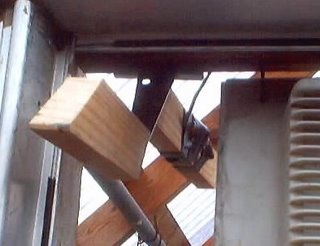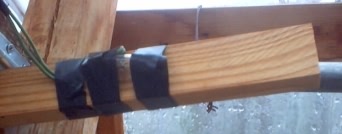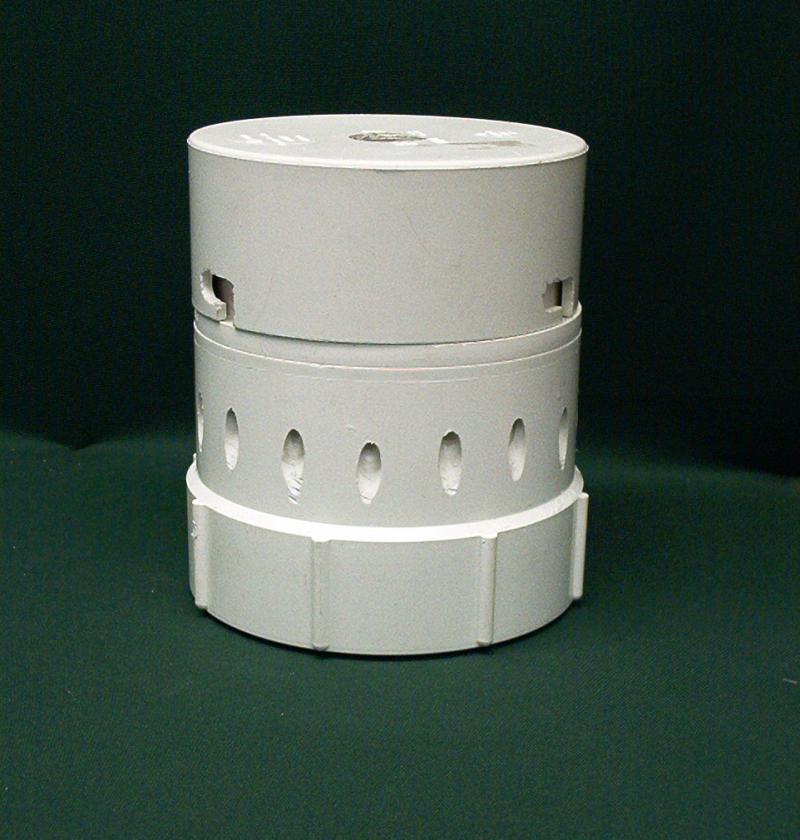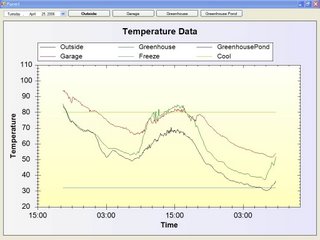Door Sensor
It has been raining on and off for the past 24 hours. So far we have about .70 inches. We are quite dry so I hope we get about 2 more inches of gentle rain.
At any rate I figured it was about time to add a sensor to let the system know when the door was open or closed. It would be a bad thing to turn on the fans when the door was closed. It would also be nice if the system could alert me that I needed to open or close the door for temperature control. Yup some things are still quite manual.
The obvious choice would be to use a reed switch, neither I or the local Radio Shack have one. I was thinking about using a limit switch but the door is a bit sloppy and the switches I have do not look moisture proof. I settled on using an old mercury switch salvaged from a blower fan. These are simple devices. When the mercury cover the contacts the circuit is closed.
 The sensor mount is little more then two bits of wood attached to a strap hinge. The switch is attached to one of the sticks with electrical tape.
The sensor mount is little more then two bits of wood attached to a strap hinge. The switch is attached to one of the sticks with electrical tape.When the door is opened the heavy end swings down causing the mercury to run away from the contacts.
When the door closes it pushes the sticks in which tilts the mercury switch and contact is made.

The tape is used to position the switch an angle that will cause the desired murcury flow.
That is all.



